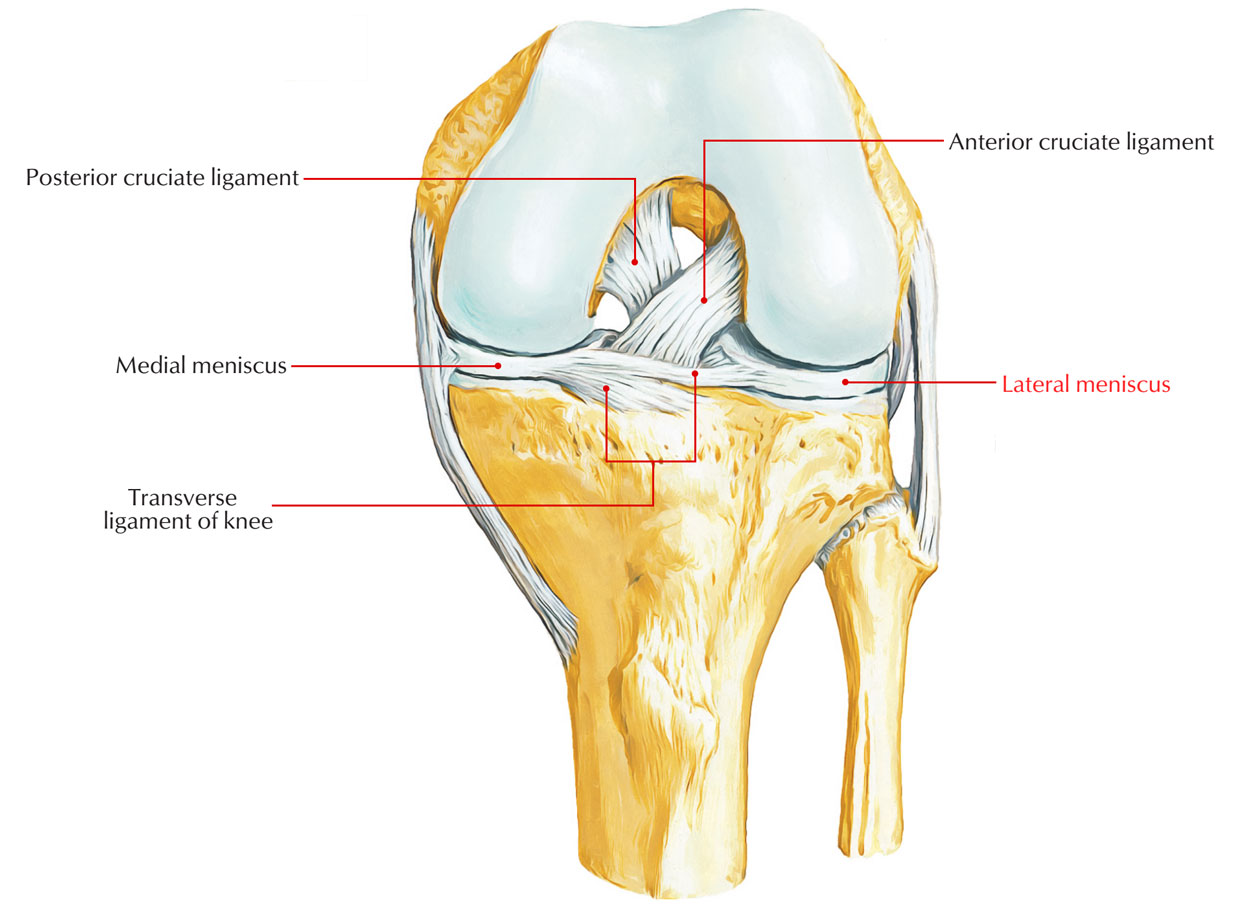The anterior meniscofemoral ligament (ligament of Humphrey) comes on anterior of the posterior cruciate ligament while the posterior meniscofemoral ligament (ligament of Wrisberg) enters behind the posterior cruciate ligament. It is basically a consistent width with almost circular in shape. It also provides anterior as well as posterior horns, which are also connected to the intercondylar region of the tibia. These kinds of ligaments play a crucial function in managing the movements of lateral meniscus throughout the extension of the knee joint.

Lateral Meniscus
Anterior Root of Lateral Meniscus
The anterior root of lateral meniscus interjects deeply below the tibial connection of the anterior cruciate ligament (ACL). The center of the attachment spot lays anteromedial to the pinnacle of the lateral tibial eminence. That fact has a crucial clinical importance, due to this lateral meniscus might be quickly hurt along with some ACL restoration methods.
Menisco-femoral Ligaments
- The meniscofibular ligament is a capsular ligament stemming via the posterolateral part of the lateral meniscus, anterior to pass away popliteal muscle tendon. This fairly large, frequently ignored ligament is thought to position the lateral meniscus and therefore having a great effect on its biomechanics.
- Failure to rebuild the meniscofibular ligament may cause secondary meniscal hurts due to impaired biomechanics. Oilier stabilizing frameworks are the popliteomeniscal fasciculis that link the lateral meniscus to the popliteus tendon and joint capsule.
- There are two menisco-femoral ligaments: the anterior menisco-femoral ligament (also referred to as Humphry ligament) as well as the posterior meniscofemoral ligament (Wrisberg ligament).
- These ligaments are secondary restraints to posterior cabinet. The menisco-femoral ligaments aid in a decrease of the tibio-femoral contact pressure of the lateral meniscus. It is possible which chronic shortage of those ligaments (after failure of its restoration during meniscal suturing or meniscal transplantation) might be accountable for lowered long-lasting outcomes after those surgical treatments.
Posterior Root of Lateral Meniscus
The posterior root of the lateral meniscus lies anterior to the attachment of the posterior horn of the medial meniscus, medial to the articular margin of the lateral tibial plateau. There are three various connection patterns. In 76 % of cases, the posterior root of lateral meniscus reveals two attachment websites, to the intertubercular region and with minor part to the posterior slope of the lateral tibial tubercule.
In the staying 24 %, the posterior root reveals a solitary attachment site either to the intertubercular region or to the posterior slope of the lateral tubercle, respectively.
Functions of the Menisci
- The menisci increase the concavities of the tibial condyles for much better congruence with the femoral condyles.
- They serve as swabs to oil the joint cavity.
- They function as shock absorber to safeguard the articular cartilage throughout weight transmission.
- They adjust to the differing curvatures of the various parts of the femoral condyles.
Artery Supply
- The blood supply to the meniscus stems via the superior as well as inferior sections of the medial and also lateral genicular arteries.
- These vessels create a perimeniscal capillary plexus inside the synovial as well as capsular tissues of the knee joint.
- This plexus circulates the peripheral 10% to 30% of the medial meniscus as well as 10% to 25% of the lateral meniscus.
- The rest of the meniscus, along with the region of the popliteal hiatus of the lateral meniscus, is avascular.
Nerve Supply
The horns of the menisci and the peripheral vascularized part of the meniscal bodies are well stimulated with totally free nerve endings (nociceptors) and three various mechanoreceptors (Ruffini corpuscles, pacinian corpuscles, and Golgi tendon organs).
Clinical Significance
Meniscus Tears
There are two various systems for tearing a meniscus: distressing and degenerative. Terrible tears generally arise from a twisting injury or a blow to the side of the knee that subjects the meniscus to stress, compression, and shear.
Degenerative tears take place as the meniscus slowly ends up being less certified and elastic in time then might stop working with just very little trauma. A meniscal tear can happen in nearly any location; nevertheless, tears restricted to the anterior horn are uncommon.
Generally tears start in the posterior horn and after that elongate forward inside the middle body. Bucket handle tears explain a vertical longitudinal tear of the meniscus with dislocation of the inner margin; they are more frequent in more youthful patients who have actually also suffered an anterior cruciate ligament tear.

 (53 votes, average: 4.78 out of 5)
(53 votes, average: 4.78 out of 5)